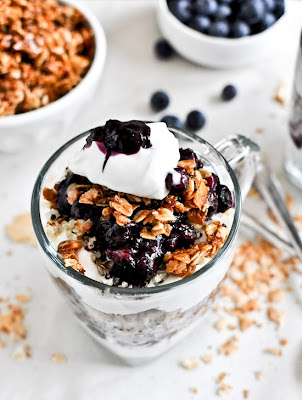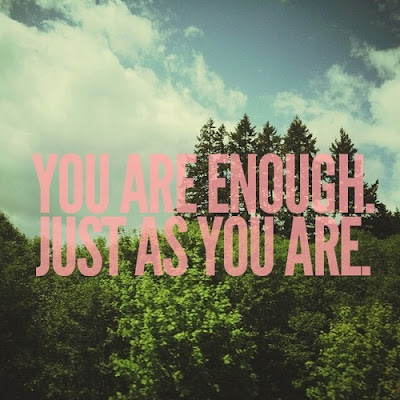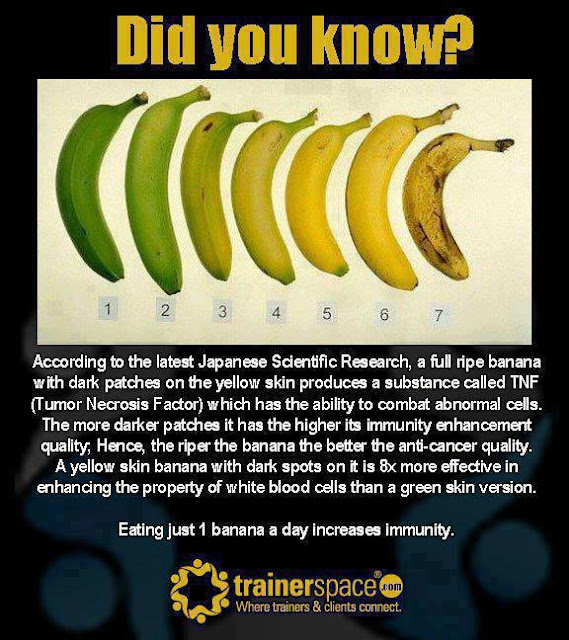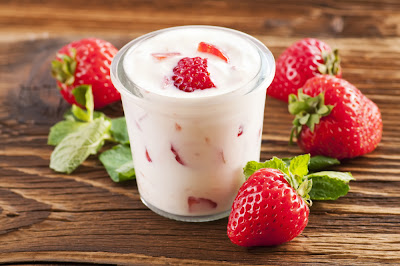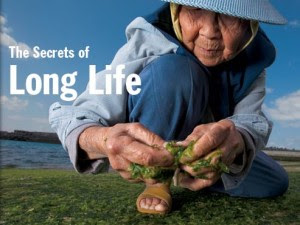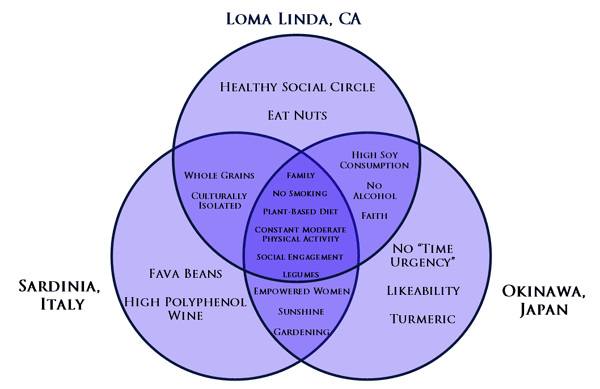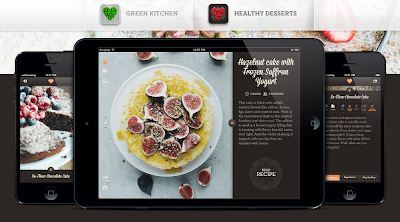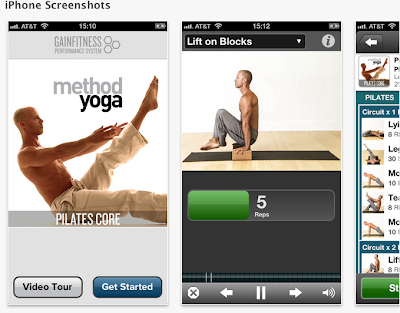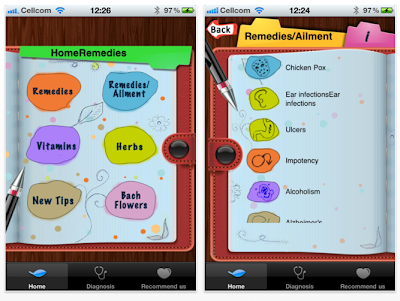Follow this link for 5 incredible facts about your body!
Friday 13 September 2013
Raw or Cooked Food
The article below is by John Douillard and discusses raw and cooked food in relation to our biological development. A great read, here is the link for his website http://lifespa.com/the-raw-and-the-cooked/#.Ui-23eDrZFI
In Michael Pollan’s new book, Cooked, he makes the case that Homo sapiens(that’s us) are here because we learned how to cook.
About 2 million years ago, with the emergence of our predecessor Homo erectus, there was a change in the size of the brains and guts in the Homo genus. Homo erectus had a smaller jaw and gut and a bigger brain compared to their mostly plant-eating ancestors.
To survive, our plant-eating ancestors—much like today’s gorillas—had to eat about half their body weight in plants each day, leaving little time for anything other than chewing.
According to Pollan, Homo erectus with their bigger brain and smaller gut figured out how to use fire to cook, allowing them to digest more nutrient-dense cooked foods quicker, leaving more time to use that bigger brain. Food was now being cooked over a fire rather than in the digestive tract, making a more moderate-sized gut plausible.
Cooking hearths dating back 1 million years BC have recently been found in Africa.
Raw foodists, Pollan claims, have difficulty keeping weight on. He goes on to cite one study that recorded menstruation cycles of women on a raw food diet, and found that half of them had stopped menstruating.
The main premise here is that we have evolved away from eating a solely raw food diet, and without blenders and juicers we would have a difficult time getting the nutrients we need.
Ayurveda, which is perhaps the oldest system of medicine still practiced today, also suggests a diet of mostly cooked foods. The cooked foods recommended are always fresh, unprocessed, and slowly cooked over a low flame.
It should be noted that in the warmer climates south of India, more raw foods and fruits are consumed as the warm sun ripens the fresh, growing food “on the vine,” making it much easier to digest. At the same time, the traditional diets of the north almost always include more cooked foods.
To be clear, neither Pollan’s book nor I suggest a diet of just cooked foods. As I discussed in my book, The 3-Season Diet, I find it hard to ignore nature’s harvest cycles and the natural shift from more cooked foods in the winter to a more raw food diet in the spring and summer, when more fresh, “cooked on the vine” produce is available.
Monday 24 June 2013
Printing Kidneys? Printing onto humans!?
Check out this Ted talk for more information.. this is crazy/remarkable!!
1 Minute Muffin
I also hate wasting things so I used the left over almond pulp from my homemade almond milk (in previous post) to make a healthy banana coconut muffin!
Ingredients:
- 1/4 cup almond meal or the pulp if you've made the almond milk
- 1 egg
- 1/2 banana
- 1-2 tablespoons desiccated coconut
- 1 tbs vanilla essence
- 1/4 tsp cinnamon
-1/2 tsp baking powder
- drizzle olive oil
- drizzle maple syrup
Mix all the ingredients in a bowl and put in the microwave for 1 minute, top with cinnamon, a bit of maple syrup and fresh banana.
This recipe is quite versatile so try it with berries, dates, nuts, cacao, chia seeds, gogi berries.. :)
DIY Almond Milk
I made my own almond milk today and it was so easy and delicious! This is a great option for those of you that are lactose intolerant and it doesn't have any other additives that a lot of the commercial almond milks have.
1. Soak 2 cups of unsalted almonds in purified water overnight
2. Drain the almonds and place in a blender with 4 cups of purified water
3. Blend on high for about a minute, until its quite fluffy
4. Drain liquid with a nut milk bag (from health food shop) into a bowl by squeezing the nut bag. This is the vegan version of milking a cow, you'll see what I'm talking about when you give it a go.
Enjoy your homemade milk! It should last up to 3 days.
Ps if you want to be really cool, you can add vanilla essence, cinnamon or a sweetner of your choice (raw honey, organic maple syrup, stevia).
1. Soak 2 cups of unsalted almonds in purified water overnight
2. Drain the almonds and place in a blender with 4 cups of purified water
3. Blend on high for about a minute, until its quite fluffy
4. Drain liquid with a nut milk bag (from health food shop) into a bowl by squeezing the nut bag. This is the vegan version of milking a cow, you'll see what I'm talking about when you give it a go.
Enjoy your homemade milk! It should last up to 3 days.
Ps if you want to be really cool, you can add vanilla essence, cinnamon or a sweetner of your choice (raw honey, organic maple syrup, stevia).
Qi Organic Green Tea Detox
In love with this tea! It puts a little twist on the pure green tea by including many detoxing herbs such as dandelion root, milk thistle, peppermint leaf, licorice, ginger and fennel seeds. Don't let these (lovely) herbs turn you off, you can't even taste them! The tea includes natural lemon and orange so it has a refreshing citrus flavour. You can even get it from commercial supermarkets.
Wednesday 12 June 2013
Tuesday 21 May 2013
1. 99 percent of our DNA is the same for all humans, it is the 1 percent that makes us all different.
2. We are all genetically designed to like sweet things as sweet things have energy and therefore survival. Note: we completely abuse this innate desire in today's society. The sugar this is referring to is back in the day when we were cavemen/women, walking for days on end and finally saw a few berries on a tree and had to climb up the tree to get them. Yep, slightly different to the average 20g we consume today.
3. Cavemen/women walked on average 20 000 steps per day, we do around 5-10 000 and think about how much more food we are ingesting.
4. Stress is one of the main factors causing irritable bowel syndrome.
5. Oxytocin is a hormone released when a mother and child look at each other for the first time and also during orgasms. Its purpose is to create a strong sense of bonding.
6. In the first few days of breastfeeding, mothers milk referred to as colostrum, contains enhanced immune fighting vitamins and minerals to support the babies immune system. Incredible!
9 Awesome Sugar Alternatives
I hope this article gives you better insight into the natural sugars that are actually good for you. I personally have been struggling to figure it out but I think I will concur with Jess and go for Raw Honey due to its taste and health benefits. The article below is written by health coach Jess Ainscough, visit her website and read about her miraculous recovery from cancer through Gerson Therapy.
~~~
We all know that white sugar ain’t great. In fact, it’s kind of like the crack of the culinary world (if you want to be lenient enough to call it food). And as I pointed out last week, agave isn’t the holy grail of sweeteners that it is made out to be. So, to clear away those dark clouds looming over a potentially un-sweetened life, here is a list of awesome natural sweetener options.
1. Raw honey | Unless you’re a strict vegan, I would say that raw honey is the sweetener of choice. It’s definitely my favourite. Read all about the benefits of honey here. Superfoods expert David Wolfe says to look for wild honey because it is lower in free fructose and higher in trace mineral content.
2. Maple syrup | Maple syrup is my favourite sweetener if I’m baking cookies of oatmeal cake, and it is divine over baked fruit. It is also full of super beneficial minerals. However, be sure to buy authentic organic maple syrup. The conventional stuff is usually fake coloured sugar water and not at all healthy.
4. Dates (or date paste) | Dates are very sweet, but they are great because they are packed with fibre. If using whole, the fresh Medjool dates are the best. If paste is required, buy organic date paste or make your own by blending or cooking them with a little water over low heat.
5. Stevia | If you’re diabetic, have candida or cancer, or you’re just worried about your blood sugar levels at all, stevia is the way to go. It won’t mess with your blood sugar levels at all. The green leaves are better than the white extract though. It’s super sweet, so you only need a small amount.
6. Yacon | Yacon (a relative to the Jerusalem artichoke) is commonly available as dehydrated chips and as a syrup. The syrup is rich in iron and only mildly glycemic. Just be sure to by certified organic.
8. Coconut sugar | With a minimal effect on blood sugar levels, coconut sugar is emerging as a favourite among vegans and raw foodies. It isn’t technically raw though, being the boiled down sap harvested from unopened coconut blossoms.
9. Molasses | If you can handle its rich flavour, molasses is a super healthy addition to your diet. It’s rich in vitamins and minerals, but be sure to select unsulfured, organic sugarcane molasses. Read more here.
Note: Even though each of the above is a natural sweetener and they are healthy to consume, most of them are still technically sugar and should be enjoyed as treats rather than in bulk.
Thursday 16 May 2013
Listen
I came across these insightful points about listening which are actually from my psychology lecture and thought I would share them with you :)
12 blocks to listening
How often do you find yourself doing these concepts?
1. Comparing – Trying to assess who is smarter, more competent, luckier, has suffered more, etc.
2. Mind reading – Distrusting what people are saying, feeling that you know better and can figure out what is really going on in the other person. Often involves making assumptions.
3. Rehearsing – Using the time the other person is speaking to think about or rehearse what you want to say. Pretending to look interested at the same time.
4. Filtering – Listening to some things and not others. Not hearing things you don’t want to hear.
5. Judging – Writing the other person off. Hastily getting involved in your own knee jerk reaction.
6. Dreaming – You are half listening until something the other person says triggers a chain of private associations.
7. Identifying – Taking everything a person tells you and referring it to your own experience. Often requiring the conversation to revolve around you.
8. Advising – Coming up with problem solving ideas before you have fully heard the other person’s story or pain. Coming up with suggestions so as not to have to be with the person’s pain.
9. Sparring – Arguing and debating with what the other person says before fully listening. Quick to disagree before hearing the whole story. Often using the word “but”.
10. Being right – You will go to any lengths to avoid being wrong. You have difficulty listening to criticism.
11. Derailing – Changing the subject or joking away the situation.
12. Placating – You want to be nice, pleasant. You often only half-listen.
Tuesday 14 May 2013
15 Natural Ways To Maintain Beautiful, Youthful Skin
Article by Kristy Rao
http://www.mindbodygreen.com/0-8355/15-natural-ways-to-maintain-beautiful-youthful-skin.html
There may not be a fountain of youth, but the food we eat and how we treat ourselves can prevent or even reverse aging. Your body needs the right nutrients to fight off damage, and your skin is no different. Nutrients help the cells replicate and have more energy. Processed foods, stress, toxins and low-nutrient diets will accelerate aging. Protecting yourself from harmful chemicals while getting enough sleep, relaxation and exercise will all help you maintain a healthy glow.
1. Drink plenty of water.
Even with a small amount of dehydration, your body functions in a less optimal way. The instant you're dehydrated, it will take a toll on your skin, causing it to look dull, flaky, saggy and loose.
2. Eat foods with antioxidants.
Antioxidants are the best resources your body has to fight disease and aging by reducing damage and inflammation. Inflammation is a leading cause of wrinkle formation. Some of the best sources of antioxidants include:
- Blueberries
- Pomegranates
- Acai berries
- Goji berries
- Spinach
- Raspberries
- Nuts
- Seeds
- Purple grapes
- Dark chocolate (70% or higher of cocoa content)
- Organic green tea
3. Have a rainbow-colored plate of food.
Free radicals form in our bodies and cause major damage to our cell structures. The different nutrient-rich foods we eat neutralize them. You need to consume the widest variety of antioxidants you can to fight off the different kinds of free radicals. Think about what colors you've missed throughout the day, and try to incorporate them into your next meal.
4. Eat organic foods.
This curtails consumption of aging toxins.
5. Limit your sun exposure.
Small amounts of daily sun produce vitamin D and are beneficial, but too much sun will damage your skin. Don’t forget to wear your sunglasses, and use zinc or titanium dioxide sunscreen.
6. Opt for natural skin products.
Many skincare products contain harsh chemicals. When choosing moisturizers or makeup, research the ingredients in them the best you can to confirm that they're safe.
7. Use non-toxic cleaning products.
It is imperative to limit exposure to toxic chemicals because the skin absorbs them.
8. Own a plant.
Indoor pollution levels can be even higher than outdoor levels. A plant in your home or by your desk at work will act as an air filter.
9. Get enough vitamin C.
A diet rich in vitamin C leads to fewer wrinkles. Researchers have found that skin exposed to vitamin C for long periods of time can produce up to eight times more collagen!
10. Avoid sugar.
It leads to damaged collagen and elastin, which cause wrinkles.
11. Eat healthy fats.
Incorporating foods such as avocados, olive oil, flax seeds, nuts and fish into your diet is important. The fatty acids are crucial for your skin to look youthful.
12. Cleanse your body.
A build up of toxins in the body due to the air, water and food causes damage to the body as well as aging. Detoxing by way of a juice cleanse is recommended for the body to be able to focus on energy production and eliminating toxins. Having a glass of water with squeezed lemon first thing in the mornings is also very cleansing.
13. Engage in activities that relieve stress.
High levels of stress will compromise your skin. Consider yoga or meditating. Eliminate problematic people and activities from your life. Confide in your friends and openly talk to them about your worries and troubles.
14. Sleep.
You skin rejuvenates and repairs itself mostly while you are asleep. Make sure that you not only sleep for eight hours a night, but that it is quality sleep.
15. Exercise.
It increases the circulation of oxygen and nutrients and releases toxins through sweat, which leads to clearer, firmer skin. Remember to smile. It’s the best exercise for your face.
Monday 6 May 2013
Tuesday 30 April 2013
For All The Meat Lovers and Haters...
I can't decide who this article is more suited for, the meat lovers? or the haters?
Regardless of your view, this article by Sarah Wilson provides insight about the controversial topic: is meat good or bad for your health.
Sarah is the author of the top selling book 'I Quit Sugar', it contains delicious recipes and a very healthy approach to eating. If you read the article you will understand that Sarah is also on her own personal health journey and is always open to new information, stating "I am not a scientist...I keep reading and learning with eyes wide open".
Plus if you read this article you are guaranteed some juicy comments from the passionate readers. I find this one comment hilarious "I feel really bad for those who are still working out which foods are best for them and are trying to sort through all the debunkings and debunking of debunkings." It's so true! this is how I feel sometimes when I read about health, but at the end of the day you just have to trust what you feel is best for your body.
http://www.sarahwilson.com.au/2013/04/10-beefy-reads-for-vegans-meat-lovers/
http://www.sarahwilson.com.au/2012/12/how-i-eat-my-meat/
Sunday 28 April 2013
Friday 26 April 2013
What You Need To Know About Yoghurt
Flip through health magazines and many wellness blogs and you'll be advised to eat yogurt. It's often touted as one of the top food for women.
Yogurt contains probiotics, calcium and protein, which have been correlated with better gastrointestinal health, improved bone density and even weight loss.
Yet read vegan blogs, including the magnetic KrisCarr.com, and dairy is the devil, contributing to mucus, bone loss and potentially cancer.
So what's the truth? Should we be eating yogurt or sending it to Dante's eighth circle of hell?
The Reputed Pros
It's loaded with probiotics.
Yogurt does contain probiotics, but if the yogurt is homogenized (almost all dairy in the US is), most of the beneficial bacteria are killed off by the heat treatment. Those that survive need to make it past the stomach acid to take up residence in the large intestine. (Even Mr. Jason Bourne is unlikely to survive heat and acid!)
If your primary reason for eating yogurt is for its probiotic content, take a good quality five-strain probiotic instead. Select one that has been encapsulated to resist stomach acid.
Yogurt has calcium.
Yogurt does contain calcium, but calcium alone will not improve bone density. Vitamin D and magnesium are both essential for the utilization of calcium by the bone matrix. Yogurt contains scant amounts of both.
In fact, when Walter Willet, M.D., Ph.D, from Harvard’s School of Public Health, gathered data from nearly 80,000 women, he found no evidence of reduced risk of hip fractures in women who consumed one to three servings of dairy daily.
If you're worried about bone health, eat a kale salad with almonds; it contains the ideal ratio of calcium to magnesium for optimal bone density.
It's packed with protein.
A 4-ounce serving of Greek yogurt contains 12 grams of protein. This is equivalent to two eggs and roughly half a 4-ounce serving of fish. Yogurt trumps on the protein front, but it's a bit of a taker; it gives nothing more.
Two eggs provide the same protein content, but also choline for enhanced brain function and conjugated linoleic acid for abdominal fat burning. I prefer the flat abs and smarter brain option.
The Reputed Cons
Yogurt is mucus-forming.
Yogurt (and dairy) can be mucus-forming, particularly in individuals who have a sensitivity to dairy or are lactose intolerant. Approximately 60% of the people on whom I run food sensitivity tests have a dairy sensitivity, which means they are reacting to a protein molecule in milk.
Take them off yogurt and milk and their chronic sinusitis and congestion (i.e. mucus) goes away (as does their IBS, headachesand bloating).
It causes bone loss.
Dairy produces an acidic residue in the body when digested. If the acidity is not buffered with magnesium, calcium, potassium and other bicarbonates, it can strip these nutrients from the bone so that the blood pH remains consistent.
One container of yogurt on a daily basis is unlikely to cause bone loss. However, combine the yogurt with granola, cereal, or jam and you'll magnify its acidic effect. (Sugar and grains are very acid-forming.)
Forgo your greens and you'll exponentially increase the risk of bone catabolism as your green vegetables supply the buffering nutrient, magnesium.
If you must have yogurt (i.e. you're at the airport and nothing else is available), avoid the parfait with granola and make sure your next meal contains green vegetables.
It's cancer forming.
Dairy contains a hormone called insulin-like growth factor (IGF-I). High levels of IGF-1 have been linked to cancer cell proliferation. Dr. Colin Campbell, Ph.D, in his book The China Study eloquently demonstrates this connection. However, he also says that a small amount of dairy does not show a cancer correlation.
So fear not, dipping your turmeric cauliflower in a yogurt sauce is unlikely to result in cancer promotion.
The Bottom Line about Yogurt
Eating organic yogurt once per week won't induce adverse health reactions, unless you have a dairy sensitivity or are lactose intolerant. Skip the daily consumption or better still, skip it altogether. There are far superior food choices that provide more nutritional punch. While yogurt is a convenient snack, so too is an apple, and where there's a yogurt for sale, there's an apple.
The article can be found here: http://www.mindbodygreen.com/0-6588/What-You-Need-to-Know-About-Yogurt.html
Thursday 25 April 2013
How To Live To Be 100: The Blue Zones
The most widely-known research on this topic has been done by Dan Buettner, a reporter and author, and has been published in several editions of a book called The Blue Zones. Working with National Geographic, Buettner researched and then visited communities where people who have lived the longest reside. He highlighted disperse areas (dubbed "The Blue Zones") where people live to be 100 at rates 10 times greater than in the United States. They are: (1) Okinawa, Japan; (2) Loma Linda, California; (3) Sardinia, Italy; (4) Nicoya, Costa Rica; and (5) Ikaria, Greece.
Common patterns were found among these 5 zones of excess centenarians, even though they are far from one another. These include:
- An absence of smoking
- Daily physical activity centered on walking
- A plant-heavy diet with very small amounts of animal protein
- Strong family connections, and strong social connections.
- Processed foods, fast foods, junk foods...? Forget about it!
Different areas had unique health habits. In Loma Linda, for example, where the Seventh Day Adventist Church is based, it's common to honor the Sabbath as a day of disconnecting from technology and visiting friends and family. Vegetarianism is a celebrated lifestyle, and eating nuts is common. Drinking alcohol is rare.
In Okinawa, it's taught that you should eat until you are 80% full, and the average daily food intake there is hundreds of calories less than in other parts of Japan. Sardinians are known for their cannonau wine reinforced with as much as three times the polyphenols like resveratrol than other regions growing red wine and consume a high amount of fava beans.
Costa Ricans consume many oranges and their water is hard and rich in minerals. Ikarians eat a classic Mediterranean diet rich in home grown vegetables. They enjoy herbal teas daily, and fast frequently. Another reason for their longevity and heart health? Recently boiled Greek coffee, which is rich in antioxidants and polyphenols.
Are there lessons we can incorporate into our lives drawn from 5 corners of the world where people age more consistently, more gracefully, and with more vitality? Buettner and others have summarized lessons to adopt including:
- Play daily
- Walk often
- Move naturally in work (for example doing yard work manually instead of using mechanical devices). It also means just being generally active as much as possible, as opposed to going to the gym and using heavy machinery to exercise.
- Live with a purpose (for helping others)
- Find ways to reduce stress through rest, prayer, and/or humor
- Eat less
- Eat fewer animal products and use legumes as the core of a fiber rich diet
- Drink in moderation if it's acceptable to you
- Let faith have a role in your life
- Emphasize family and loving relationships
- Have social networks
The resident scholar of longevity in the United States, George Burns, was asked about his formula for living over 100.
His response?
“If you ask what is the single most important key to longevity, I would have to say it is avoiding worry, stress and tension. And if you didn’t ask me, I’d still have to say it.”
Thursday 18 April 2013
Iron Rich Foods
For all the vegan/vegetarians, take note!
If you are frequently feeling tired (even if you are getting enough sleep) there could be a chance that you are low in iron. It is quite likely the case if you are vegan or vegetarian as iron is high in meat. However, you can get iron from plant based foods, you just have to make sure you eat a varied diet that includes a balance of grains, legumes, nuts and seeds, fruits and vegetables.
If you are frequently feeling tired (even if you are getting enough sleep) there could be a chance that you are low in iron. It is quite likely the case if you are vegan or vegetarian as iron is high in meat. However, you can get iron from plant based foods, you just have to make sure you eat a varied diet that includes a balance of grains, legumes, nuts and seeds, fruits and vegetables.
Monday 15 April 2013
Awesome Apps
If you would like to get any of these apps just type the name into the app store and they should all come up
1. Green Kitchen
3. Pilates Core
4. Nike Training- this is very cool, literally your own personal trainer
5. Home Remedy
6. Spirit Junkie (this is my favourite!)
1. Green Kitchen
2. Healthy Desserts - by Green Kitchen
3. Pilates Core
4. Nike Training- this is very cool, literally your own personal trainer
5. Home Remedy
6. Spirit Junkie (this is my favourite!)
Subscribe to:
Posts (Atom)















